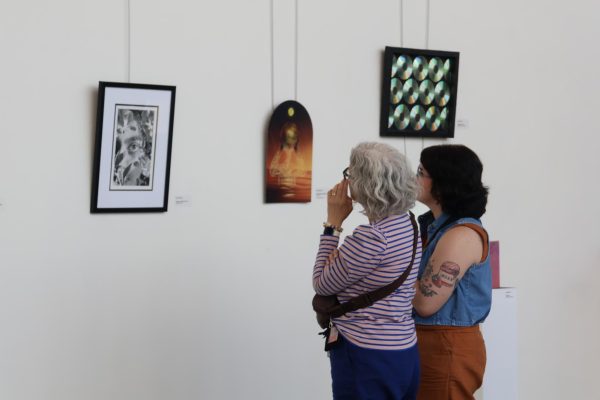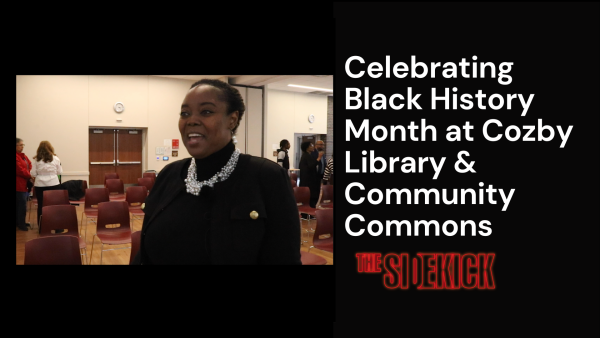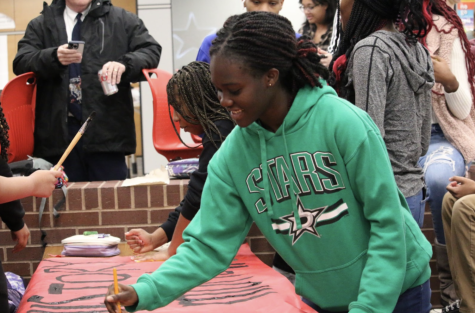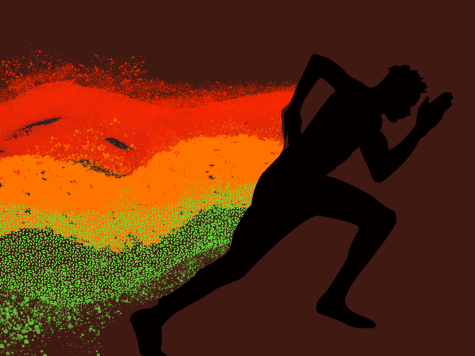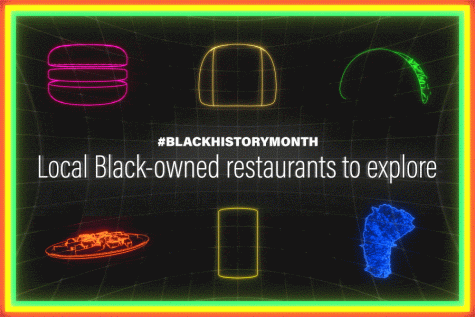#BlackHistoryMonth: Vanishing footprint left by Black community on pop culture
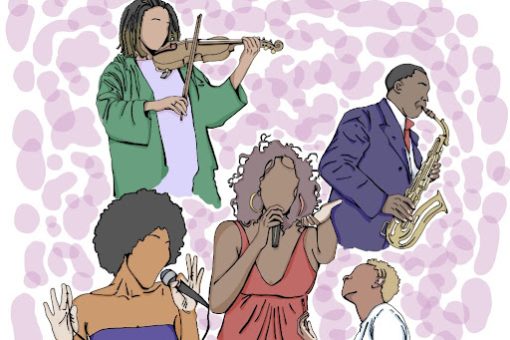
The Black community has shaped contemporary culture throughout history. The Sidekick staff writer Minnie Gazawada gives credit to their cultural impact. Graphic by Maya Palavali
Slang, rhythm and blues, jazz, lettuce hem, hoop earrings and logomania.
What do they all have in common?
Their roots are found in Black history.
Each has been impacted by the culture throughout history, shaping the contemporary world. For example, the appreciative slang phrase “yas queen” originates from the Black LGBTQ community, and the popular fashion trend of lettuce hems was created by Stephen Burrows, an African American designer. These are just some of the thousands of ideas born in Black communities and expanded to worldwide exchange.
“I think art is a huge part of what expressions of Black culture can look like,” Coppell High School debate and world history teacher SunHee Simon said. “We see it in a lot of art that has been passed down over the decades and popular songs; we see it everywhere.”
Popular phrases such as “Hakuna Matata” from The Lion King and “Waka Waka” from Shakira’s hit song are well-known in definition but not origin. “Hakuna Matata,” which means “no worries” in Swahili, comes from a language spoken by 100 million people that traces back to East Africa; “Waka Waka” means “do it” in the Cameroonian Fang language from Central Africa. The lack of cultural awareness surrounding these origins downplays the Black communities’ cultural impact as people don’t understand the full story behind the meaning. Diverse cultures are watered down to a few words.
When it comes to music, Rhythm and blues (R&B) has influenced hip-hop, rock ‘n’ roll, K-pop and several other popular genres. R&B takes the struggles of African Americans in the early 1900s with segregation and other forms of intense marginalization and expresses them through music.
The Harlem Renaissance was a period of time in which Black culture flourished as the community sought to establish a better quality of living by expression through art and music. A major contemporary change led by the movement was the popularity of jazz music, sparked by rhythms that diffused from West Africa and resurfaced in New Orleans. For centuries, music has played a role in the uplift of marginalized communities; it shouldn’t be brushed aside as fun party songs, as such narratives steal credit from the communities that fought to establish respect and recognition in Harlem.
“It’s kind of resurging now, but I think a lot of the Harlem Renaissance artists, [specifically] the jazz musicians, some of their artwork was being overshadowed simply because of their race,” AP art history teacher Michelle Hauske said.
Black culture has also influenced fashion with new trends such as Logomania and fashion designers such as Dapper Dan. A fashion designer from Harlem, known as Dapper Dan, became widely popular in the late 1980s for clothing that focused on logos and brands. Its beginnings were written by Dan’s designing of these large brand logos and he gained large support with rappers such as Jay-Z; but his spotlight soon vanished after forcibly shutting down by the police, leaving a large demand of its products that name brands took responsibility. This led to modern fashion showcased by Gucci, Louis Vuitton and other name brands without true recognition of the creator of logomania’s contemporary impact on high fashion.
“If we look at the Harlem Renaissance, for example, and the artwork coming out of that or quilting traditions that were traditionally African American, they brought us really bright colors [and[ beautiful design elements,” Hauske said. “I think other more prominent white painters [were credited] when they were being made again.”
However, regardless of the popularity of these trends, most fail to recognize their roots, illustrating how Black communities have not received the deserved credit for their part in shaping entertainment industries.
“If you created something, you should be credited for it, even if it doesn’t match with people’s ideas of what it looks like now,” Simon said. “History and where things come from is an important part of its story, so taking [trends] out of [historical context] isn’t a good thing.”
There’s only one way to solve the lack of credit: exposure.
“Having exposure and diversity in classes, reading poetry, reading literature, seeing artwork and watching films by people of color or diversity are important for young people,” Hauske said. “Having that discussion and getting that exposure, then more voices are heard.”
We have the power and ability to bring attention to this issue. It is in our hands to light the spotlight on the Black community, to make it clear visibility of their footprint and to be able to see Black culture and history’s true impact. The Black community shouldn’t have to fight tooth and nail for the bare minimum amount of credit for their work.
Follow Minnie (@mridinigazawada) and @CHSCampusNews on Twitter.

Minnie is a sophomore and a first-year staff writer and designer of The Sidekick. She loves to sit down and read anytime and any day. She is a big fan...

Maya Palavali is a senior and the Staff Cartoonist for the lovely The Sidekick. Her favorite thing in the world is her dog, Romeo, and expressing her...








